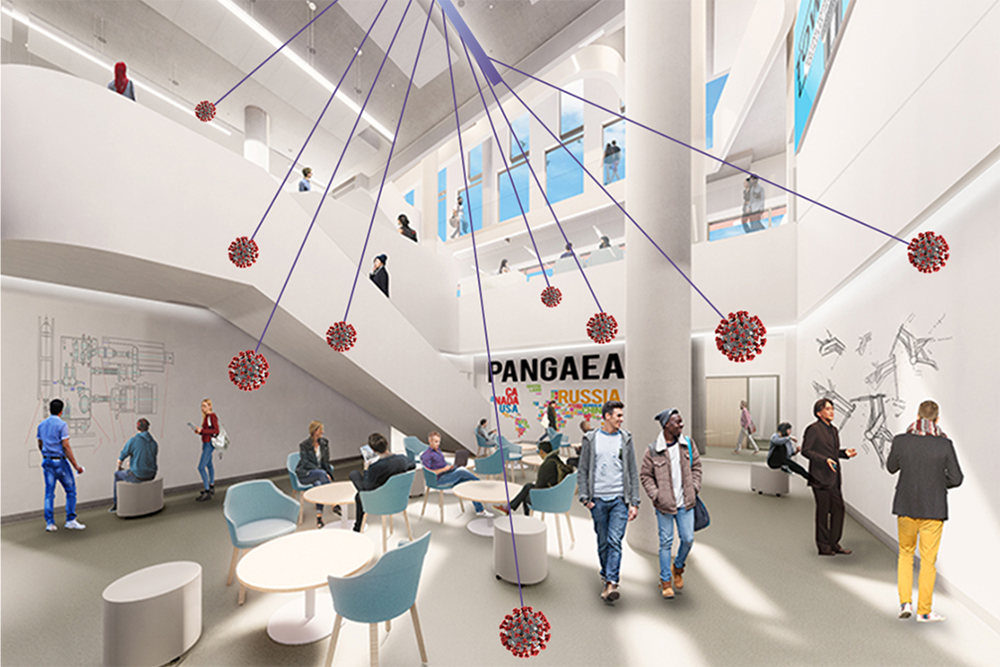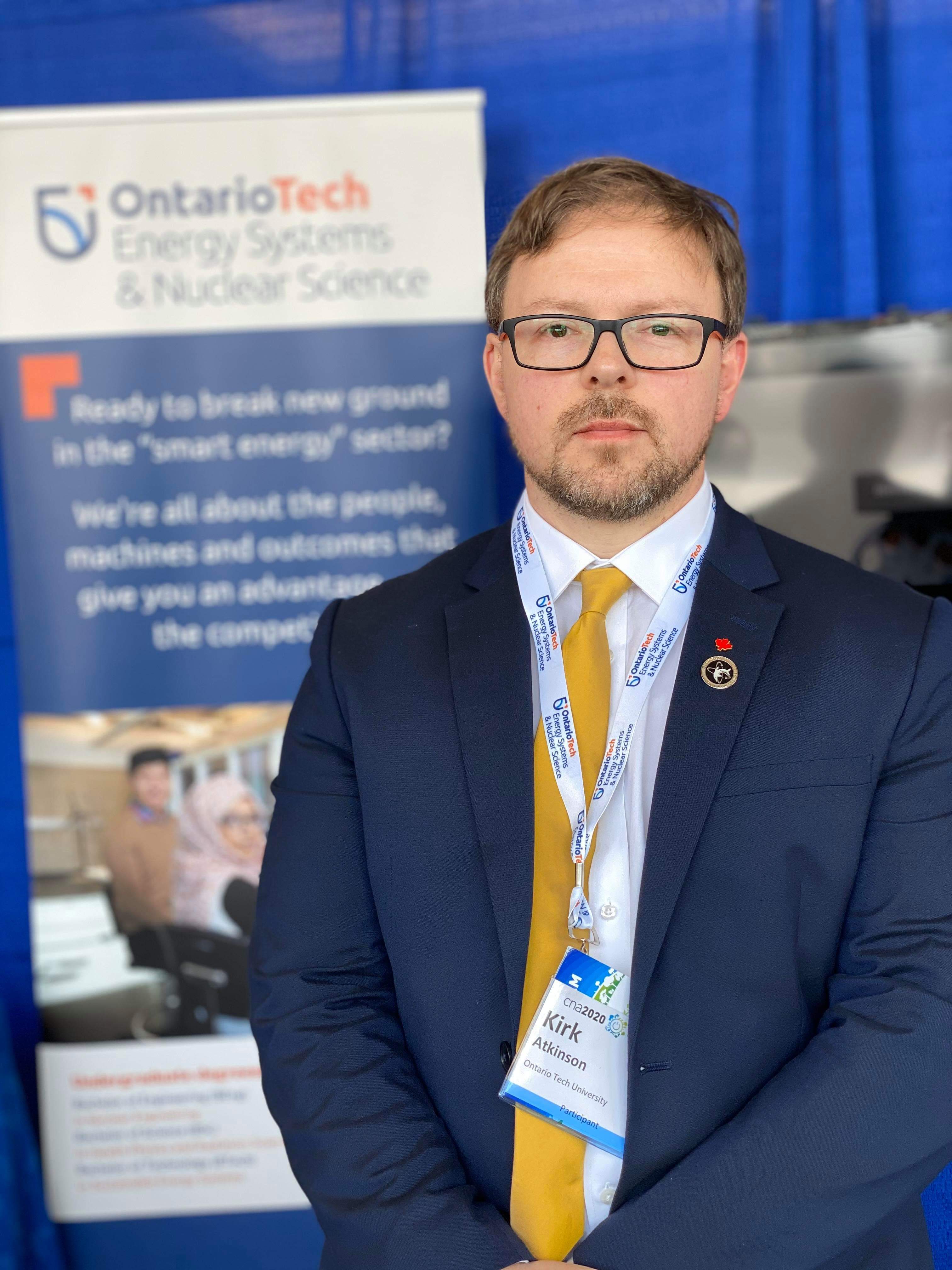Potential COVID-19 game-changer: Could far-UVC light stop transmission of coronavirus?
Ontario Tech University researcher Dr. Kirk Atkinson says the application of unique radiation properties may hold promise
November 13, 2020

In the months since the onset of the COVID-19 pandemic, the world has been hoping for an easy way to control or stop coronavirus transmission. A health physics and nuclear engineering researcher at Ontario Tech University in Oshawa is exploring one potential solution using far-UVC light, a safe type of ultraviolet light.
Dr. Kirk Atkinson of the Faculty of Energy Systems and Nuclear Science (FESNS) says far-UVC lamps could potentially be a safe and inexpensive way of reducing airborne pathogens like coronavirus. Dr. Atkinson’s latest paper ( Predicting airborne coronavirus inactivation by far-UVC in populated rooms using a high-fidelity coupled radiation-CFD* model) was published in Nature Scientific Reports journal in November 2020.
“The important distinction to make is that we’re talking about ‘far-UVC’ light, which has a shorter wavelength compared to ‘normal’ UVC,” says Dr. Atkinson, Associate Professor and NSERC/UNENE Industrial Research Chair. “Scientists and engineers have long known that conventional UVC light can be used for microbial sterilization. But as it is extremely harmful to humans, potentially causing cataracts or skin cancer, it cannot be used around people. Far-UVC, in contrast, is similarly capable of killing airborne pathogens, but because it cannot penetrate the outer layer of the skin or eye, it is safe to use around people.”
One of the biggest global public-health challenges with COVID-19 is air-droplet (aerosol) transmission. While mask wearing and physical distancing helps mitigate this, people are tired of doing it and compliance is waning, everywhere. If we couple this with family gatherings common at this time of year, as well as more people working, shopping or studying indoors, it’s not surprising that we’re seeing large daily increases in COVID-19 infections.
“In the colder months of the year, far-UVC illumination may be the answer to preventing COVID-19 transmission in enclosed spaces,” says Dr. Atkinson. “Imagine if you could simply screw a far-UVC light bulb into a standard light fixture. Switching the light on will sterilize the air for everyone in the room. This is what we’re aiming for. We’ve done some simulations that looked at long-term care facilities and private rooms in hospitals. We discovered the effectiveness of far-UVC illumination in poorly ventilated spaces is as good as N95 masks in preventing transmission under some circumstances. While industry and governments are investing heavily in ventilation infrastructure, ventilation by itself has mixed effectiveness if the virus is not being killed. Far-UVC is much cheaper to implement.”
One impediment to adoption of far-UVC is people not understanding the distinction between UVC and far-UVC, or people just not believing there is sufficient evidence to prove its safety. This is where the challenge is moving forward.
“We all know that COVID-19 isn’t going anywhere, anytime soon. Even with announcements from big pharma that a vaccine will be publicly available in the near future, recent evidence suggests the vaccine might only provide immunity for a few months at best. We cannot take the risk that a hard-earned return to normality could be snatched away from us again. We must be ready with other COVID-19-fighting tools in the box. As pandemic-capable viruses seem to appear every five or 10 years, if we don’t prepare, it is only a matter of time before we could find ourselves in lockdown again.”
Dr. Atkinson and his two co-authors from Great Britain, Dr. Andrew Buchan from Queen Mary University of London, and Dr. Liang Yang from Cranfield University, hope to uncover new sources of funding for further investigations and to address all outstanding issues necessary to get far-UVC light into service faster.
Background information
- UVC: Ultraviolet C light is a subtype of one of the three types of electromagnetic radiation with wavelengths shorter than visible light rays. At 100 to 280 nanometres (nm), UVC has a shorter wavelength than UVA and UVB. Humans wear sunblock to protect against UVA and UVB. Human-safe far-UVC falls in the 207 to 222 nm range and can be produced by special bulbs and lamps. These can be used to disinfect pathogens. Far-UVC is safe because it has the unique property of interacting more readily (and loses energy more rapidly) than lower wavelength UVC, but is not energetic enough to reach living human cells.
- *CFD: Computational fluid dynamics
Media contact
Communications and Marketing
Ontario Tech University
communications@ontariotechu.ca






